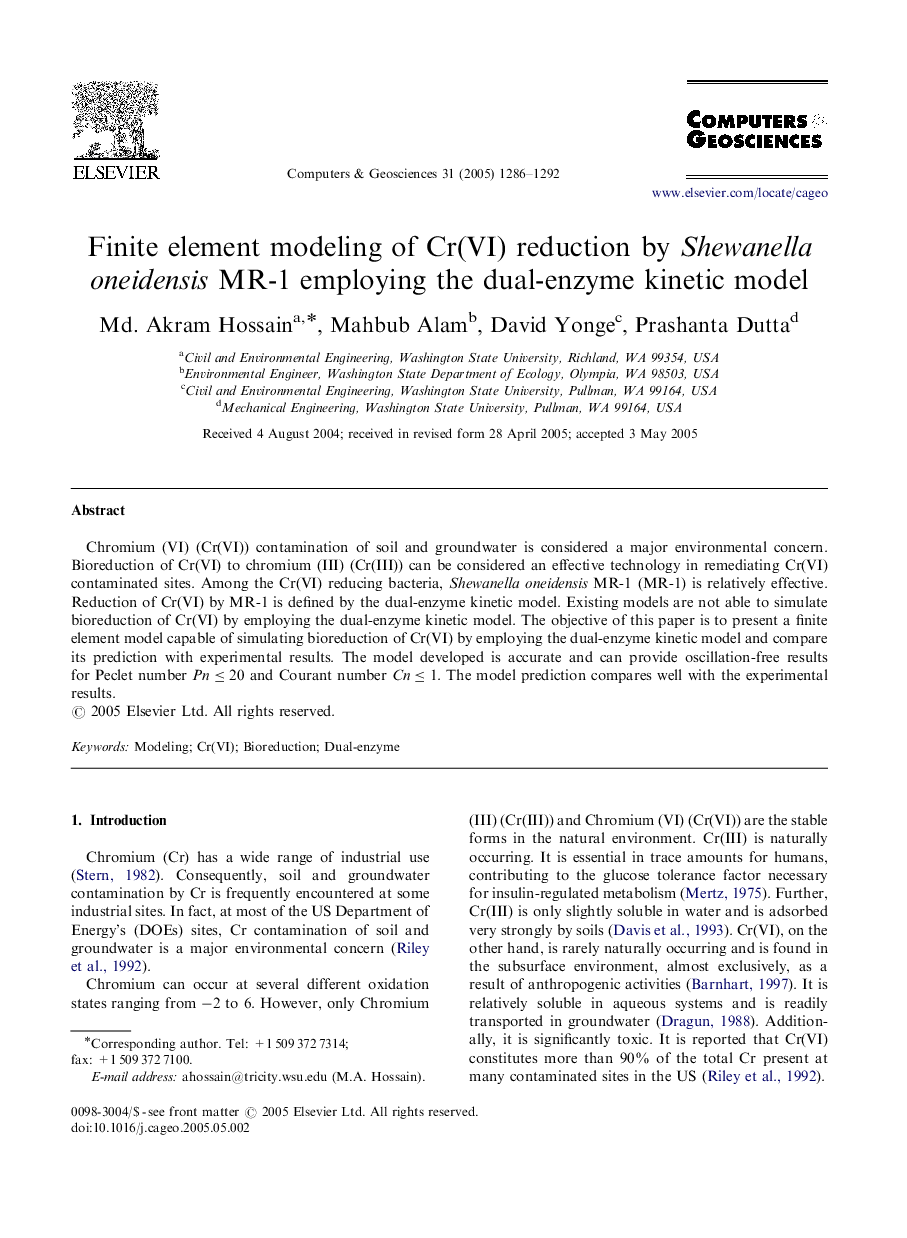| Article ID | Journal | Published Year | Pages | File Type |
|---|---|---|---|---|
| 10352746 | Computers & Geosciences | 2005 | 7 Pages |
Abstract
Chromium (VI) (Cr(VI)) contamination of soil and groundwater is considered a major environmental concern. Bioreduction of Cr(VI) to chromium (III) (Cr(III)) can be considered an effective technology in remediating Cr(VI) contaminated sites. Among the Cr(VI) reducing bacteria, Shewanella oneidensis MR-1 (MR-1) is relatively effective. Reduction of Cr(VI) by MR-1 is defined by the dual-enzyme kinetic model. Existing models are not able to simulate bioreduction of Cr(VI) by employing the dual-enzyme kinetic model. The objective of this paper is to present a finite element model capable of simulating bioreduction of Cr(VI) by employing the dual-enzyme kinetic model and compare its prediction with experimental results. The model developed is accurate and can provide oscillation-free results for Peclet number Pnâ¤20 and Courant number Cnâ¤1. The model prediction compares well with the experimental results.
Keywords
Related Topics
Physical Sciences and Engineering
Computer Science
Computer Science Applications
Authors
Md. Akram Hossain, Mahbub Alam, David Yonge, Prashanta Dutta,
